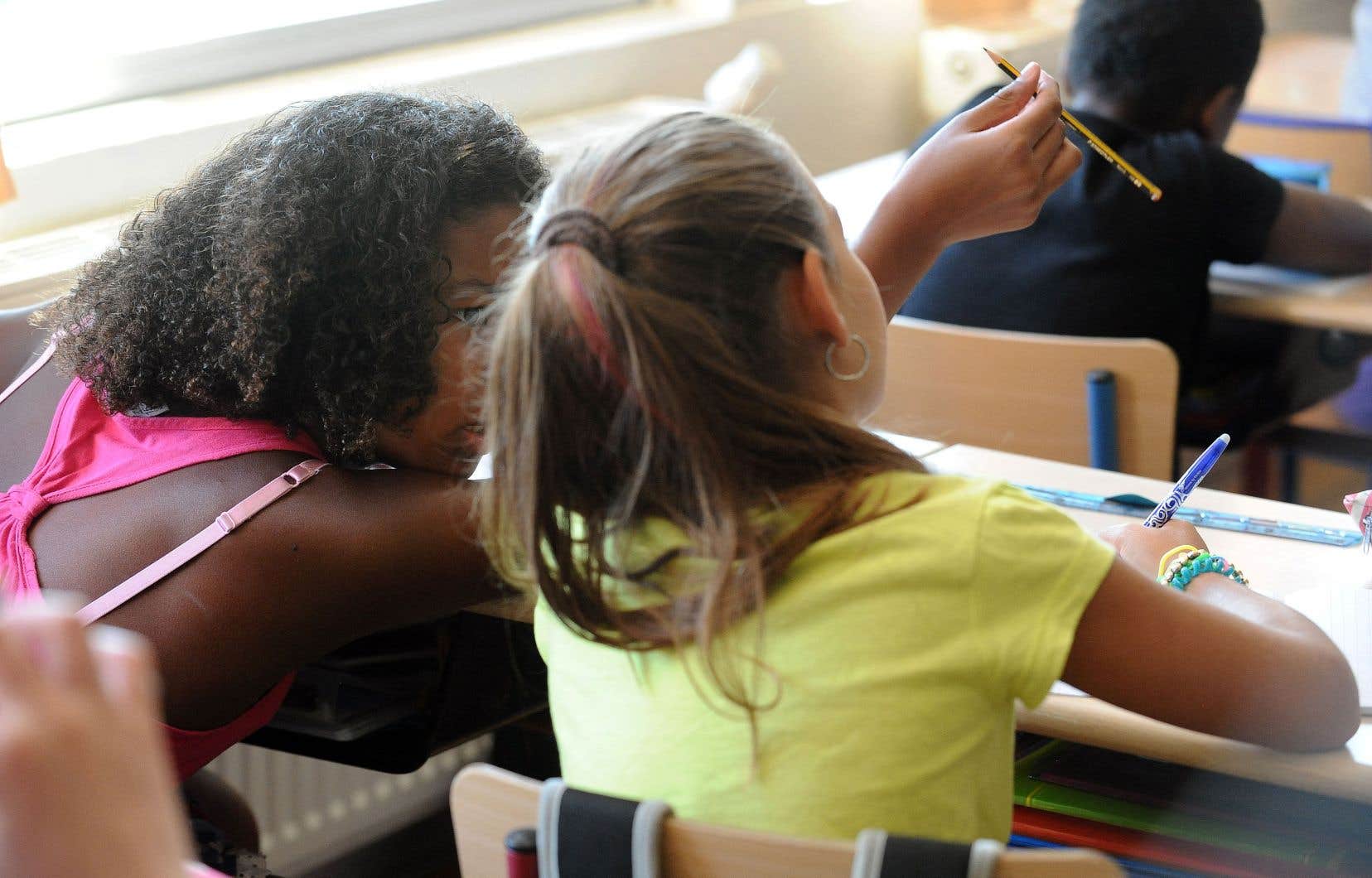Dozens of parents denounce the new grading method at Sainte-Cécile primary school, located in the Villeray district of Montreal. Since September, students have been evaluated based on a color scale (blue, green, yellow and red) which translates into four possible grades in the report card: 50%, 65%, 80% and 95%. Parents say this tiered system lacks nuance and harms children hoping to be admitted to particular public high school programs or private colleges.
Marie-Ève Laurin is outraged by the new evaluation system at Sainte-Cécile school. The grades of her boy, who is in fourth grade, have declined in some subjects compared to last year. In the first report card, in mid-November, he obtained 80% in mathematics, although his results are usually higher. “But what worried us was the 65% in science and technology,” she said.
The parents want their boy to attend Mont-Saint-Louis college, where their daughter is already studying. However, this private Montreal establishment analyzes the results of the fourth and fifth years to proceed with admissions. ” Note [de 65 %] generated anxiety in our boy and in us,” says Marie-Ève Laurin.
The CEGEP professor judges that the “giant” gap of 15% between the levels “is detrimental” to the students of Sainte-Cécile, in particular those who will soon apply for admission to secondary school. “I find that the report card must reflect in a fair and nuanced way the learning and evaluations that were made during the session. »
Julia Vallelunga also opposes this method of scoring. His son is studying in the third year. “I have nothing against the levels, but there is too big a difference between 65 and 80 or 80 and 95,” she says. Ninety-five percent seems unattainable. For him, it’s a bit demotivating. For parents too. »
Ninety-five percent seems unattainable. For [notre garçon], it’s a bit demotivating. For parents too.
Geneviève Beaudoin, who has a child in fifth grade at Sainte-Cécile, says she is “divided” regarding this new evaluation method. She fears students at the school will be “disadvantaged” during secondary school admissions processes. Sainte-Cécile school is the only one in the Montreal School Services Center (CSSDM) to have adopted such an evaluation system, confirms the CSSDM.
For her part, the president of the school’s governing board, Isabelle Plante, deplores that the board was not consulted before the implementation of the new evaluation system. She seeks to know whether the body should have been involved. “Procedural error or not, honestly, what I want is for us to work collaboratively,” she said. Even if the law does not formalize it, it is a shame not to have been contacted. »
To find out about the existence of the scale, parents had to consult the Info-Parents distributed in November, then click on a link directing them to a 36-page online guide designed by the school. The color code appears on page 14.
A smaller gap
The management of the Sainte-Cécile school, which accommodates some 470 students, did not respond to questions from Duty. In response, the CSSDM sent the newspaper a letter from management addressed to parents dated November 23. It is written that “the approach surrounding the grading scale and its modification was respected” with regard to the Public Education Act and “the local orientations of each establishment”.
Management emphasizes, however, that in order to “offer more nuance in the percentage grading”, it will establish “with the teaching team a scale which will make it possible to determine intervals with a smaller gap between each evaluation level”.
Professor at the Faculty of Educational Sciences at the University of Montreal, Mélanie Paré participated in the design of the Sainte-Cécile grade scale. According to her, “many” Quebec schools are currently revising their evaluation method in order to be consistent with “skills-based” teaching programs. “The Higher Education Council said that there was too much pressure on children currently around grades,” she adds. It’s bad for students, because it creates stress, competition, anxiety. »
Mélanie Paré believes that students do not need grades to progress in their learning and that only parents who wish to enroll their child in a selective public or private program require them. “All the other parents really agree with this kind of rating,” she maintains.
The fact remains that the Ministry of Education requires a numerical report card from schools that are not “alternative”. “The school [Sainte-Cécile] fully responded to the ministry’s request: it’s an encrypted bulletin,” retorts Mélanie Paré.
Micheline-Joanne Durand, retired professor from the University of Montreal and specialist in the evaluation of learning and skills, believes that from an educational point of view, children should, in an ideal world, be evaluated based on numbers (1 , 2, 3, etc.), letters (A, B, C, etc.), colors or comments. But since the ministry requires percentage grades, schools like Sainte-Cécile must resort to conversion tables. And that’s where it hurts. ” The parents [d’élèves de Sainte-Cécile] are right: 15% difference is a lot. The percentage should be more nuanced. » She suggests using colors like blue+ (100%), blue (95%) and blue- (90%).
Julia Vallelunga hopes that the school will opt for levels with differences of 5%. “Because if we put jumps of 10, it’s still a lot,” she maintains.
